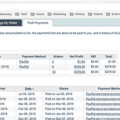How talk of war, recessions and elections could affect mortgage rates in 2020
We’re not even halfway through January and it has already been a crazy year.
In these turbulent times with threats of war and recession as well as looming elections, many have speculated as to what headline risks would negatively impact the overall economy, thus affecting mortgage rates.
For a deeper dive into this, it’s important to remember that bond market yields are a huge factor that drives mortgage rates.
Logan Mohtashami,
Columnist
Since the end of 2014, when I first started to incorporate the bond market forecast, my forecasts have followed the same themes. I predicted that the 10-year yield would stay within the channel between 1.6% and 3%.
I view a yield that stabilizes at 1.6% then goes below, as an indication of news headlines pushing yields down, rather than a recession indicator. The 10-year yield has indeed broken below 1.6% three times in this record-breaking expansion, but these dips were short-lived.
Each time, the drops were driven by headline events, but that didn’t mean the U.S. was going into recession.
The three events that drove yields under 1.6% on the 10-year treasury in this cycle were as follows:
- The 2012 European bond market scare that caused some to speculate that Spain would default.
- The 2016 Brexit scare that rapidly dissipated
- The 2019 China trade war tap dance and the inverted yield curve
In each instance, the 10-year yield recovered higher. Not one of these times did the U.S. economy suffer from the full six recession red flags that I have outlined in my recession model.
Some have feared that war in the middle east would bring the U.S. into a recession. But we’re not living in the 1970s anymore. This is America 2020. Oil production has boomed since 2010, the dollar currency is strong that should keep a lid on oil prices spiking out of control.
When the news media reported that Iranian missiles were shot into Iraq, the 10-year yield did drop 10 basis points, but then immediately headed back higher, followed by a stock market rally.
Obviously, I am not suggesting that headline risk can’t drive yields lower. Any stock market sell-off, correction, or near-bear market can drive money into bonds short term. There are still many headline-driven risks in play this year.
If growth picks up, even just a tad this year, then I don’t expect we will stay under 1.6% for long if yields fall to that level. If the 10-year yield can close above 1.94% and get follow-through bond market selling, that is a bullish bond market take on the U.S. economy.
Slowing growth took yields lower in 2019, but slower growth doesn’t necessarily mean an imminent recession.
The reality in this record-breaking expansion is that headline-driven events take us below 1.6% on the 10-year yield in the short-term.
Still, we don’t stay there long, and it doesn’t lead to a recession because recessionary factors are not present in the economy. At some point, the U.S. will be in a recession, but we aren’t there yet.
The U.S. housing market has done good enough as long as the 10-year yield stays below 2.62% and has looked much better when we have a handle on the 10-year yield.
There is some benefit to a slower-growing economy which drives yields lower. We desperately needed lower rates after the supply spike we saw late in 2018 in the new home sales market. Keep an eye out of the economic data and don’t fall for the scare tactics some people use with any one-time event.
While the U.S. economy isn’t a fast-growing economy, it’s a stable one.






